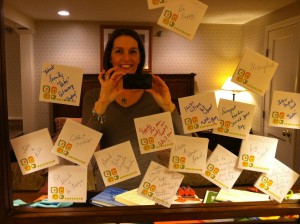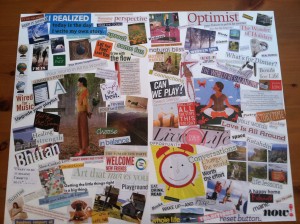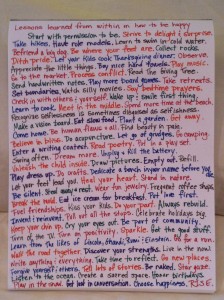Dedicated to my little brother Jordan.
Lessons you learn from having a much younger brother:
• You will learn at age 12 that sometimes the couch isn’t wet because somebody spilled something. Sorry, kids, but when my older brother and I arrived home after school to an empty house, this is how we pieced together that my mom was in labor.
• You will cry tears of joy when you dad announces, “Jordan DuBois has arrived.” Your Nana will adopt this as one of her Alzheimer’s stories to be told time and time again. It’s the one story you won’t grow tired of hearing.
• Your mom’s best friend will sneak you into the hospital room to meet your baby brother even before you’re really allowed in there. You will get caught and yelled at – you won’t care.
• Baby boys pee on you – the first time you ever change them.
• If you play “airplane” after a baby eats, there’s a good chance they’ll throw up. There’s also a decent chance your mouth will be their target.
• Babies sometimes figure out how to crawl out of their cribs long before you are ready for them to do so. This is the first of many things they’ll do before you are ready.
• When your parents are out of town and your toddler brother gets a piece of wood jammed up his foot, you will hold him down in the Emergency Room while he gets a shot straight up his foot, then has it removed. Your older brother will disappear.
• You will know all of your little brothers friends. And you will adopt them, too.
• Chances are you’ll be the only student in your eleventh grade English class to journal about a five-year-old when asked to write about “Your best pal.”
• You’ll cringe as you utter the words, “Do you want me to pull this car over?” when you are only 17 years of age?
• You’ll learn patience truly is a virtue. It’s one you’ll try to teach your own children someday when much of the time you suck at it yourself.
• You’ll never know what it’s like to send your own kids off to college, but you’ll get a tiny taste when you go off to college and say “good-bye” to your first grade brother.
• You’ll be so poor in college you won’t buy an umbrella for yourself, but you will always scrape enough money together to send a care package home to your little brother for every holiday. Halloween and Valentine’s will be the best.
• Your little brother will adore you so much that he shaves an “M” in his already buzz cut hair simply because you go to Maryland. It won’t be the first time he’s done something like this.
• Your teenage brother won’t dare let your parents drop him off near the door of the mall, but he’ll still hold your hand walking around inside of it. This will make you happy.
• You’ll learn that kids need people in addition to their parents that they can trust – sometimes more so.
• Your little brother will come to you about anything.
• When you put your little brother back on a plane after visiting you and your husband for weeks at a time, he will bawl and it will take every ounce of will power to be strong and let go.
• Those few weeks will go down as some of your best memories. Ever.
• You’ll learn that kids are way more resilient than adults. That we don’t give them enough credit. And, too often, we underestimate them.
• The first time you talk to your brother about the birds and the bees, your face will turn red, your chest will tighten, and you will realize this was way harder than you ever expected. But, you will be glad that you did it.
• You will understand the specialness of taking a teenage boy to his first rock concert. And you will add taking your own sons to their first concert someday to your bucket list.
• The day will come when your little brother won’t come to you about everything.
• You will learn to accept this and trust you’ve done the best you can. And now he will do the best he can.
• Your relationship will shift and while you will always play the role of “Big sis,” a deep friendship will evolve.
• Steelers games, Ice Bowls, Penguin playoff beards, drinks at Grittys, hiking in Maine, and shooting hoops will become the definition of bonding.
• You will understand that someday your own boys will own a million t-shirts, be willing to part with none of them, and keep buying them. There will be something strangely endearing about this.
• You will realize you were cut out to raise boys.
• You will watch your little brother fall in love. And you will feel true joy because he does.
• Your little brother will visit you every summer (all over the country) and then settle down – at least for the time being – 20 miles up the street in Maine. This will be one of the greatest gifts of your lifetime.
• You will go through hard times.
• Your heart will swell and break more than you ever imagined. But the swelling will always be greater.
• You will love the hell out of each other.
• You will be in his wedding, and it will be more your honor than his.
• He will be the most amazing uncle ever. His wife will be an awesome aunt – and the sister you never had.
• You will realize your little brother isn’t so little anymore. You will be proud of the man he has become.
• You will think there’s a chance you’ll be all right as a parent yourself.
• You’ll still be grateful to know that your kids have a great uncle to fall back on.
• You will be the best of friends and the best of family.
• At age 39, on your run to work, you will think about your little brother on his 27th birthday. You will reflect. You will laugh. You will beam with pride. And, you will know that for every second of his life, you have loved him.
 I love people who experiment. So when United Way of Greater Portland’s Jessica Esch asked me if I wanted to participate in the organization’s 20th Day of Caring by mining stories, I was all for it. Neither of us knew going into it how things would unfold or how we’d use the stories down the road, but that’s okay because we’re the kind of crazy people who roll with it.
I love people who experiment. So when United Way of Greater Portland’s Jessica Esch asked me if I wanted to participate in the organization’s 20th Day of Caring by mining stories, I was all for it. Neither of us knew going into it how things would unfold or how we’d use the stories down the road, but that’s okay because we’re the kind of crazy people who roll with it.





